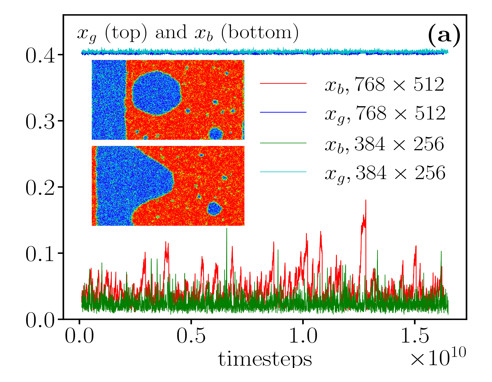Our work on active matter remains at the edge of the still rapid evolution of the field. Our main lines of research were:
i) building and analysis of minimal models and theories describing the generic and universal physics of active systems, i.e., quantitative and qualitative properties that are independent of system-details;
ii) model building for experiments (swarming bacteria, active colloids, fish). Our research covered both dry and wet active matter systems, i.e. those in which the fluid in which particles move is either irrelevant or crucial for their phenomenology.
Highlights:
- discovery of qualitatively novel physics in active phase separating systems and its understanding in terms of interfacial tensions, minimal field theories and particle models;
- realization that ‘polar flocks’, the workhorse case study of the field, are both fragile and metastable, something that should lead to a paradigm shift;
- precise description of the large-scale properties of bacterial suspensions, employing kinetic theories derived from those developed in plasma physics in the mid of last century and the verification of these predictions via large-scale numerical simulations. We note as well the publication of a review article[1], and significant results obtained in our theoretical understanding of out of equilibrium systems.

Novel types of phase separation arise in active systems and our group was pivotal in predicting their emergence. Here, numerical simulations of a minimal particle model show that dynamic vapor bubbles of all sizes (in blue) populate the dense phase (in red), something impossible in passive fluids. Also shown are the time-evolution of total vapor area (top) and area fraction occupied by vapor bubbles dispersed in the dense phase (bottom), showing very strong temporal variations over extremely large timescales. Figure extracted from ref.[1]
[1] H. Chaté, Dry aligning dilute active matter, Ann. Rev. Cond. Matt. Phys. 11, 179 (2020)

Hugue CHATÉ
CEA researcher

Ivan DORNIC
CEA researcher

Cesare NARDINI
CEA researcher



